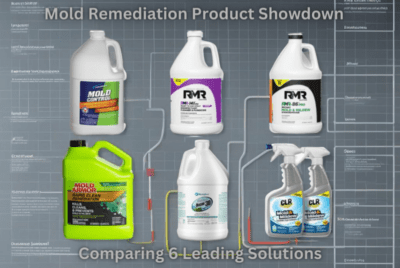How to Measure Humidity: An Essential Guide for Homes
Humidity. We hear about it on the weather channel, we complain about it when it makes our hair frizz up, and we blame it when our skin feels dry. But what exactly is humidity? And more importantly, how do we measure humidity in our homes? Let’s dive deep and unravel this atmospheric mystery.
What is Humidity?
Ever walked outside on a hot day and felt like you’ve walked into a wall of water? That wall is essentially moisture in the air, and that, my friend, is humidity. At its core, humidity is the amount of water vapor in the air. Imagine a sponge: when it’s soaked with water, it’s like high humidity. And when it’s dry? Yep, low humidity. Now, imagine your home as that sponge. Too wet or too dry, and it won’t feel too cozy.
How to Measure the Relative Indoor Humidity Level
I’m a DIY enthusiast, and trust me, measuring the humidity level isn’t rocket science. You don’t need a fancy degree; you just need the right tools and a pinch of curiosity.
The Ice Cube Method
Here’s a neat trick I learned. Grab a glass, fill it with ice, and let it sit for about 5 minutes. Now, check the outside. If droplets form, congrats! The room’s humidity is at least 60%. If not, it’s below. Simple, right? But keep in mind, it’s not the most precise method out there.
Instruments and Tools for Measuring Humidity
For those looking for a more accurate way to understand how to measure humidity, humidity meters or hygrometers are the way to go. These gadgets measure the amount of moisture in the air. They’re handy, pretty affordable, and can give you insights into your home’s climate. If you’re serious about your indoor comfort, investing in one is a good idea.
Here’s how you can use a hygrometer.
- Purchase a Hygrometer: There are many types of hygrometers available, ranging from traditional analog versions to digital ones. Digital hygrometers tend to be more accurate and often come with additional features, such as temperature readings.
- Place the Hygrometer in the Room: For the most accurate reading, place the hygrometer in the center of the room, away from direct sunlight, heating vents, and other sources of heat or drafts. Avoid placing it near bathrooms or kitchens, where humidity levels can be skewed by showers or cooking.
- Wait for a Stable Reading: Once placed in the desired location, wait for the device to provide a stable reading. This might take a few minutes to an hour, depending on the specific device and the conditions of the room.
- Read the Humidity Level: On most digital hygrometers, the relative humidity will be displayed as a percentage. An ideal indoor relative humidity level usually ranges between 30% and 50%.
- Take Multiple Readings: If you suspect varying humidity levels in different parts of your home, take readings in multiple rooms at different times of the day. This will provide a more comprehensive understanding of your home’s overall humidity profile.
- Act Accordingly: If you find that humidity levels are consistently high, consider using a dehumidifier to reduce moisture in the air. On the other hand, if humidity levels are too low, a humidifier can help add moisture to the air.
Remember to periodically check the battery (if your hygrometer uses one) and calibrate the device if needed to ensure accurate readings.
What is a Dew Point?
You might’ve heard this term tossed around, especially when the weather’s sticky. Dew point refers to the temperature at which the air becomes saturated and can’t hold any more moisture. Think of it as the tipping point. When the air temperature drops to the dew point, voila, you get dew! It’s essentially the point of no return for moisture in the air.
What is a Comfortable Indoor Humidity Level?
Here’s the golden question: What’s the sweet spot for humidity in our homes? Generally, a range between 30-50% is the goal. But how do you ensure you’re in that range? Well, that’s where knowing how to measure humidity comes in handy.
The Importance of Controlling Indoor Humidity Levels
Ever wonder why old books smell, well, old? Or why your beloved guitar warps if left in a damp room? That’s humidity doing its thing. By controlling it, and knowing how to measure humidity, we not only make our homes comfortable but also prevent the growth of mold and allergens. Plus, well-regulated humidity can even help you save on energy bills. How cool is that?
Managing Indoor Humidity
Okay, so you’ve measured your home’s humidity and found it lacking (or overabundant). What next? Here are a couple of pointers:
- Dehumidifiers and Humidifiers: Depending on whether you need to add or remove moisture, these gadgets can be lifesavers.
- Ventilation: An underrated hero. Ensure your home, especially areas like bathrooms and kitchens, are well-ventilated. It’s like giving your house a fresh breath of air!
Conclusion
To sum it up, humidity isn’t just a weather term or an excuse for a bad hair day. It’s an essential aspect of our living environment. By understanding and managing it, we create healthier, happier homes. So, why not give measuring your home’s humidity a try? You might just find that sweet spot of comfort.
Frequently Asked Questions
What is the ideal humidity level for a bedroom?
-
- Ideally, it’s between 30-50%. This ensures comfort and prevents conditions conducive to mold growth.
Can high humidity damage my electronics?
-
- Yes, prolonged exposure to high humidity can damage electronic devices.
How often should I check my home’s humidity?
-
- It’s good to check it seasonally, especially during transitional periods like spring and fall.
Is low humidity bad for houseplants?
-
- Yes, many houseplants prefer higher humidity. If you find your plants’ leaves turning brown at the tips, it might be due to low humidity.
Can pets be affected by humidity levels?
-
- Absolutely. Just like us, our furry friends can experience discomfort if the humidity is too high or too low. Ensure their living spaces are comfortable too!
You might want to visit these organizations’ websites or search for specific studies or publications from them related to measuring or managing indoor humidity.
- National Oceanic and Atmospheric Administration (NOAA)
- Website: https://www.noaa.gov/
- Description: NOAA is an American scientific agency that focuses on the conditions of the oceans, major waterways, and the atmosphere. They often have data and studies related to weather conditions, including humidity.
- American Society of Heating, Refrigerating and Air-Conditioning Engineers (ASHRAE)
- Website: https://www.ashrae.org/
- Description: ASHRAE sets many standards for the design and maintenance of indoor environments, including the proper humidity levels for human health and comfort. They have numerous publications related to indoor air quality and comfort.




